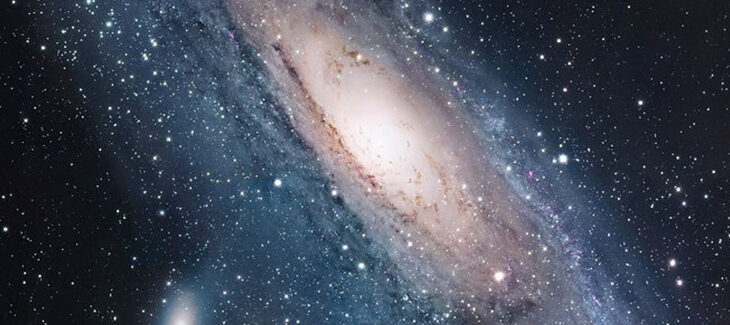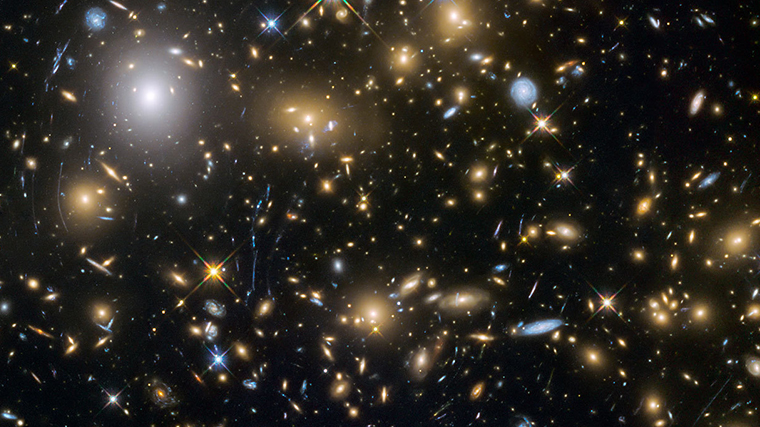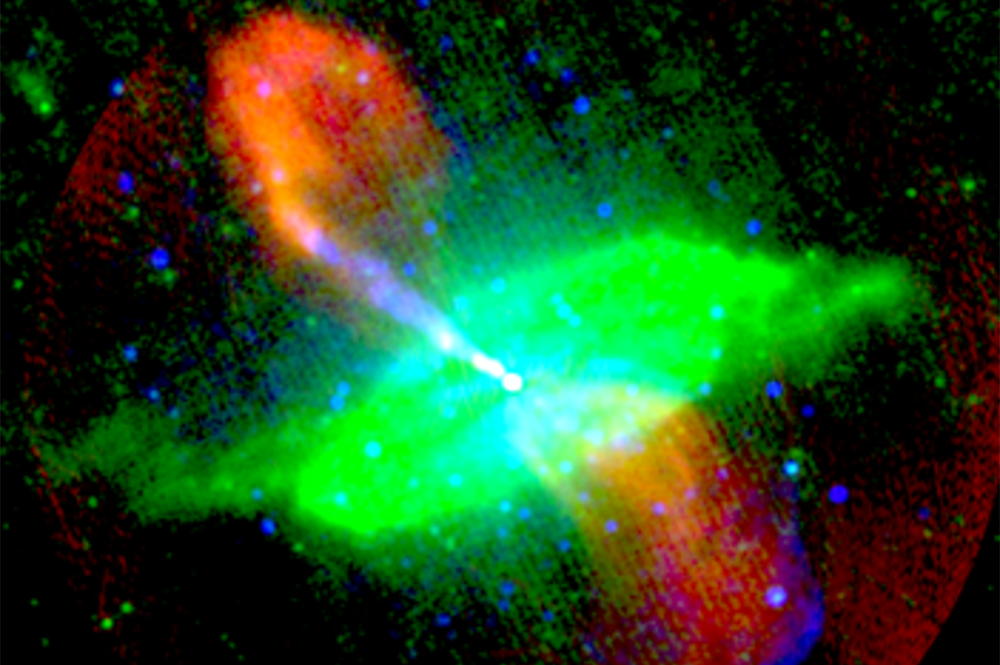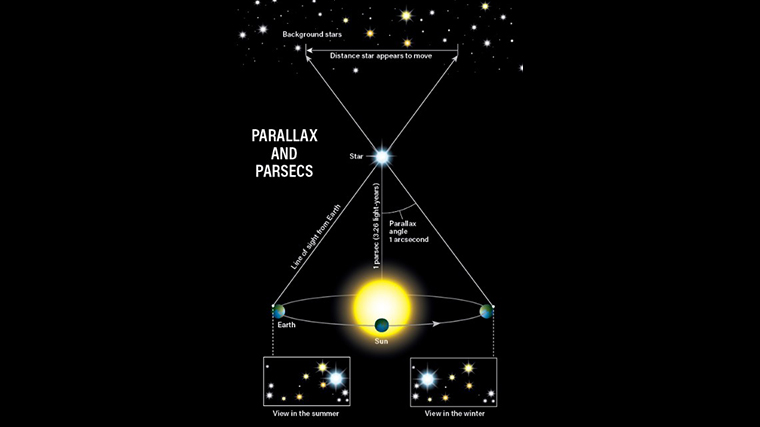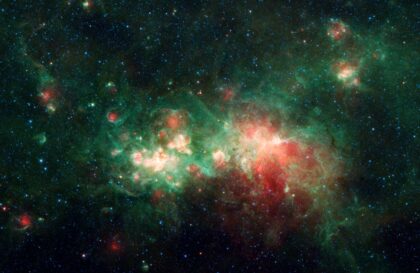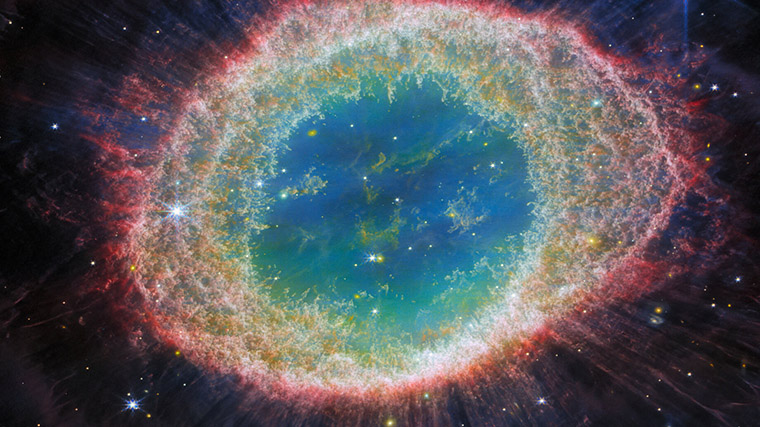The Andromeda Galaxy, also known as M31 or the Andromeda Nebula, captivates with its uniqueness in the night sky. It was first discovered by the Persian astronomer Abd al-Rahman al-Sufi in 964 AD. In his book “The Book of Fixed Stars,” he described this object as a “small cloud.”
The Andromeda Galaxy is located at a distance of approximately 2.5 million light-years from Earth in the constellation of Andromeda. This is an impressive object, the nearest prominent neighbor of the Milky Way, and what sets it apart is that it can be observed without a telescope.
Its diameter is estimated to be about 220,000 light-years and contains approximately one trillion stars, twice as many stars as in our Milky Way. Additionally, the galaxy has a significant amount of dark matter, accounting for about 90% of its total mass.
Physical Characteristics of the Andromeda Galaxy
The Andromeda Galaxy is a spiral galaxy with a distinct shape and unique structure. Its shape is particular, with a disk with a bent S-like form featuring curved spiral arms and ring-like structures. The galaxy consists of various elements, including hydrogen, helium, and trace amounts of heavier elements. Within the Andromeda Galaxy are billions of stars, including a blue disk of stars visible from Earth.
The two most prominent satellites of the Andromeda Galaxy are M32 and M110. These satellites provide valuable information about the processes involved in the formation and evolution of the galaxy, unveiling the mysteries of its complex history and the factors that have determined its physical characteristics.
The Connection Between the Andromeda Galaxy and the Milky Way
The Andromeda Galaxy, M31, and the Milky Way are the two most giant galaxies in the Local Group of galaxies. Galaxy M31 is observed to be in motion towards us, moving at a speed of approximately 110 kilometers per second. This means that the Andromeda Galaxy is approaching the Milky Way with each passing moment.
Credits: NASA; ESA; Z. Levay and R. van der Marel, STScI; T. Hallas; and A. Mellinger
Scientists have made predictions about the future collision between the Andromeda Galaxy and the Milky Way. According to their estimates, this event will occur in approximately 4.5 billion years. This collision will have a significant impact on both galaxies. The gravitational forces between them will compel them to merge into a more giant single galaxy. This newly formed galaxy will likely have a completely different shape and structure than any original galaxy. Stars belonging to both galaxies will be thrown into new orbits, and new stars will form during the collision and merging of gas and dust.
Research and Study of the Andromeda Galaxy
Thanks to powerful telescopes and space observatories, astronomers have been able to investigate the Andromeda Galaxy more extensively. The Hubble Space Telescope has captured stunning photographs of this galaxy, revealing intricate details of its spiral arms, dust lanes, and star clusters. We also anticipate that the James Webb Space Telescope, launched in 2021, will provide even more detailed observations of the Andromeda Galaxy and other distant galaxies.
Current scientific research is focused on understanding the distribution of dark matter within the Andromeda Galaxy and studying the formation and evolution processes of star clusters and supermassive black holes in this galaxy.
The Significance of the Andromeda Galaxy in Astronomy and Beyond
Scientists have developed models and theories related to the early stages of the Universe, the Big Bang, and the process of star and galaxy formation.
This image from Hubble spans 7,900 light-years and reveals M31’s crowded central region. The bright area to the right of the center is a grouping of stars nestled around the galaxy’s black hole. The blue dots sprinkled throughout the image are ultra-blue stars that have prematurely cast off their outer layers of material, exposing their extremely hot cores.
Credits: NASA, ESA, and B. Williams and J. Dalcanton (University of Washington, Seattle)
The Andromeda Galaxy has also garnered significant interest in the context of the search for extraterrestrial life. Due to its vast size and potentially habitable planets, Andromeda is identified as a possible location for life beyond our planet. Its proximity to our own Solar System makes it a prime target for future space exploration missions, with the potential to discover new forms of life or even evidence of intelligent civilizations.
Scientists extensively study the stars residing in the Andromeda Galaxy, hoping to identify stars that may become supernovae, and they analyze the possibility of hazardous supernova explosions in the near future. Researchers also investigate the structure and composition of stars within the Andromeda Galaxy, including studying its central core and the distribution of stars and gas in its various regions.
Banner image: ESA/Hubble, Photo by R. Gendler
Image credit:
https://esahubble.org
https://www.nasa.gov
https://www.nasa.gov
